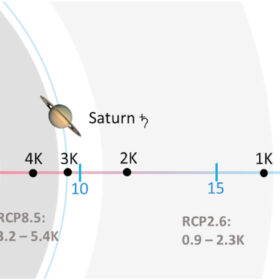New passive solar module cooling tech based on lightweight hydrogel
Researchers at Thailand’s Vidyasirimedhi Institute of Science and Technology demonstrated a novel hydrogel that has high cooling effect on silicon PV panels. The lightweight technology purportedly enables a temperature drop of 23 C, from 70 to 47 C, and a relative 12.3% power conversion efficiency increase.
Cadmium telluride vs. crystalline silicon in agrivoltaics
Researchers in Canada have compared strawberry growth under uniform illumination from semi-transparent thin-film cadmium telluride panels and non-uniform illumination from semi-transparent crystalline silicon modules. Their analysis considered metrics such as fresh weight, height, leaf count, chlorophyll content, soil temperature and humidity.
Dual-component controller for three-phase solar inverters can reduce overshoot to less than 0.33%
An international research team has conceived a dual-component controller for three-phase inverters that can reportedly achieve faster settling times, reduced overshoot and more stable current tracking compared to conventional controllers.
Japan’s 23rd solar auction concludes with lowest bid of $0.030/kWh
Japan has allocated 93 MW of PV capacity in its latest procurement exercise. The lowest bid came in at JPY 4.47 ($0.030)/kWh, while the average final price was JPY 5.06/kWh.
Transparent tandem solar cell hits record 12.3% efficiency
A global research team has developed a tandem solar cell with 30% transparency by combining perovskite and organic layers, achieving a record 12.3% efficiency for transparent solar cells.
Field survey protocol for monitoring PV backsheet degradation
A research group including scientists from U.S. National Institute of Standards and Technology (NIST), Underwriter’s Laboratories Inc., and the National Renewable Energy Laboratory (NREL) has outlined a new protocol for assessing PV module backsheet degradation in the field. Through the proposed framework, the researchers analyzed PV backsheet degradation across 41 sites, with exposure times ranging from 1 to 38 years.
Solar wafer prices trend upward as China’s domestic demand surges
In a new weekly update for pv magazine, OPIS, a Dow Jones company, provides a quick look at the main price trends in the global PV industry.
Tecnalia, Vita International developing solar guardrails
Spain’s Tecnalia and Italy-based Vita International have designed a new photovoltaic guardrail, set for testing later this year on a 100-meter stretch of a highway service area between Turin and Trieste, Italy.
Prices rising across China’s PV supply chain, says EnergyTrend
Taiwan-based research firm EnergyTrend says market optimism in China has driven up solar module prices, while production of modules, cells, and wafers has increased month on month.
I, Photovoltaics
New research from Germany has investigated for the first time the idea of building a photovoltaic Dyson sphere, a theoretical megastructure that could provide vast amounts of energy for interstellar space travel and large-scale technological endeavors. Despite its highly theoretical and science-fiction inspiration, the study explains what consequences a similar construct would have on life on Earth.









